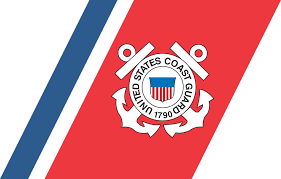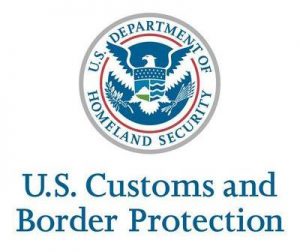This Marine Safety Information Bulletin supersedes Volume XXII, Issue 018 “Carrollton Gauge 12 Feet and Rising”, originally published on March 8, 2022.
When the Carrollton Gauge reads 12 feet and falling, the following requirements will no longer be in effect:
1. For all vessels operating in the Lower Mississippi River (LMR) below Mile Marker (MM) 233.9 Above Head of Passes (AHP), including South Pass and Southwest Pass, additional high water requirements are found in Title 33 of the Code of Federal Regulations (CFR) 165.810(b)(2).
2. For barge fleets located between MM 88 and MM 240 AHP, additional high water requirements are found in 33 CFR 165.803(m).
3. For all other barge fleets (below MM 88 and between MM 240 and MM 254.5 AHP), a U.S. Coast Guard Vessel Traffic Service (VTS) Measure is established in accordance with 33 CFR 161.11, to enhance the safety of barge fleets. The 33 CFR 165.803 regulations requiring stricter barge fleeting standards on the LMR are extended to include all barge fleets in these areas.
The following operating requirements remain in effect:
1. In accordance with 33 CFR 161.65, the Governor Nicholls Harbor Traffic Control Light 94, Gretna Harbor Traffic Control Light 97, and the Westwego Traffic Light 102 are energized.
2. The Harbor Traffic Control Lights are located at:
Governor Nicholls Light, MM 94.3, AHP, Left Descending Bank (LDB), LMR (LLNR 13855/34770),
Gretna Light, MM 96.6, AHP, Right Descending Bank (RDB), LMR (LLNR 13880/34795), and
Westwego Traffic Light, MM 101.4, AHP, RDB, LMR (LLNR13950).
3. The Governor Nicholls Navigation Light 94 and the Gretna Navigation Light 97 are extinguished while Traffic Control Lights are operating.
4. In accordance with 33 CFR 160.111 (c), the COTP has determined that during periods of high water, unless moored to a shore side facility or mooring buoys, all deep draft vessels must have three means to hold position. An example would be two fully operational anchors and the propulsion system. Should a vessel lose an anchor or suffer a propulsion casualty, and the vessel does not have redundant capabilities available, such as aft anchors or two main engines, then a third means of holding position could be via tug assist.
5. All vessels, facilities, and vessel agents planning to warp a vessel should consult with the appropriate pilot association prior to warping.
6. All cargo transfers authorized in designated anchorages, as noted in 33 CFR 110.195, are required to submit a Notice of Midstream Transfer form for review 48-hours prior to commencing transfer operations within the Captain of the Port New Orleans (COTP) zone.
Midstream cargo transfers may be conducted at the designated anchorages within the New Orleans COTP zone as defined by 33 CFR 110.195(a), with exception of the General Anchorage (MM 90.1 – 90.9 AHP) and the Quarantine Anchorage (MM 90.9 – 91.6 AHP). This requirement does NOT affect:
a. Vessel-to-vessel transfers, which take place at a Coast Guard regulated facility.
b. Bunkers or delivery of ships stores.
c. Cargo operations, which take place in a designated and established mid-stream, buoy system.
Anyone wishing to conduct vessel-to-vessel cargo transfers not specifically exempted as noted above, should contact the Sector New Orleans Facility Compliance Branch at (504) 365-2370 or by e-mail at FacilitiesNOLA@uscg.mil. A Midstream Transfer Notice form was supplied in MSIB XXII Issue 015.
Mariners should also familiarize themselves with MSIB XV, Issue 13 “Vessel Anchoring Capabilities.”
This Marine Safety Information Bulletin supersedes Volume XXII, Issue 018 “Carrollton Gauge at 12 Feet and Rising.”
For further information, contact the following:
Vessel Traffic Service (24 hours): (504) 365-2514, VHF-FM Ch. 05A, 12, or 67
Sector New Orleans Command Center (24 hours): (504) 365-2545
Sector New Orleans Facility Compliance Branch: (504) 329-2370 or FacilitesNOLA@uscg.mil
Sector New Orleans Waterways Management: (504) 365-2280 or SecNOLA-WPM@uscg.mil


